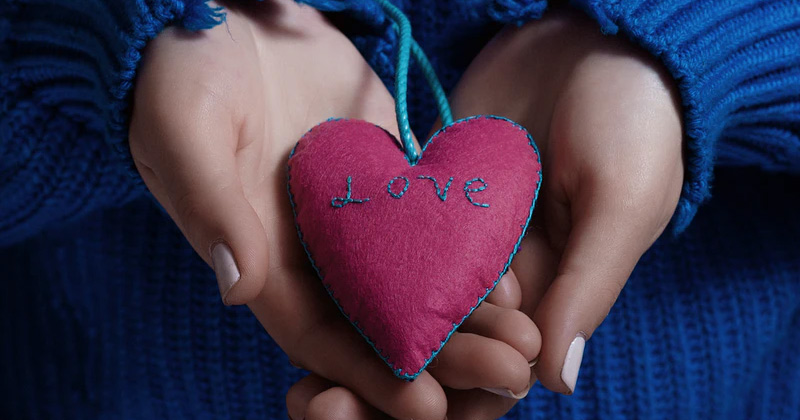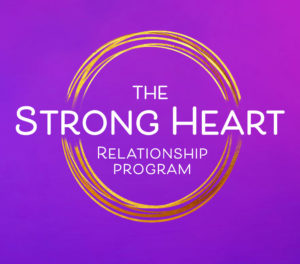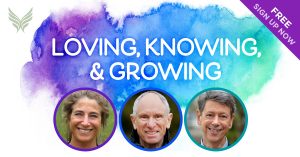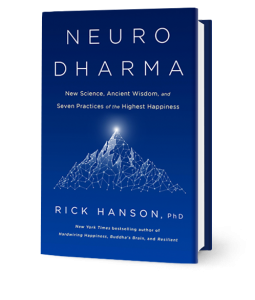
Love
What is the role of the heart in our experiences?
To begin with, I think it’s easy to make category errors in confusing the metaphorical and the physical heart. The heart sounds warm and fuzzy while the brain sounds gushy or “head-y.” So it’s tempting to ascribe heartfelt feelings/inclinations to the physical heart even though it’s actually the brain that (still somewhat mysteriously) constructs those feelings and inclinations as experiences in our field of awareness.
As to the physical heart and the brain, there is interesting research on heart rate variability from Dacher Keltner, Heartmath, and other sources. I think sometimes there is an overemphasis on the heart’s influence on the brain and thus our experience of things like warm and loving feelings. Still, clearly there are feedback loops in which cardio-pulmonary processes regulate neural and thus mental activity. In effect, through Heartmath or related methods (e.g., metta practice in Buddhism, devotional practices in Hinduism), one can use the mind to affect the brain to affect the physical heart, which in turn affects the brain, which causes the mind to feel more peaceful/loving/happy. I have not seen research to this effect, but it is certainly plausible that changes in a person’s mental state – such as becoming more loving – involve functional and structural changes in the neuro-fabric of the heart.
Polyvagal theory is also a tremendous resource that indicates linkages between the heart and lungs and the “social engagement system.”
You write: “Is it painful to feel love because it stirs up old frustrated longings…so that you dial down the love to suppress the longings?” Where can I find answers to this enigma?
We can have desires for love (in many forms, including simple decent treatment of us by others) that reach all the way back to infancy. Sometimes these desires – wishes, hopes, needs, wants, longings – are tended well by others even if not perfectly. And sometimes they are not – perhaps traumatically, though more often by lots of little disappointments and mistreatments that accumulate over time in emotional memory. Naturally, the brain associates the longing for love to the pain we feel when it is not given appropriately to us.
So then when today that longing is stirred up, even in simple ways like meeting someone who might become a friend, the brain/mind quickly associates that desire to the (understandable) expectation of pain…so then we withdraw in one way or another – unless we are conscious of this process, and with self-compassion and insight can “step in” inside our own mind to remind ourselves that this is now not then, and that we can indeed open a bit and see what happens and if it goes well, keep opening a little more, step by clear seeing step.
What can be done to elicit the desired response and inhibit the undesired one, for those experiencing high levels of self-criticism?
- The direct way to grow a psychological resource is to experience (“activate”) it in order to “install” it. But sometimes that is challenging or upsetting. So we grow factors of this resource through experiences of these factors that are more accessible. Let’s say the direct experience of self-compassion is hard for the reasons you very insightfully identify. But the experience of a factor of self-compassion – such as the concept that justice applies to oneself as well as to others, or the capacity to calm the body when upset – might be within reach.
- In order to tolerate resource experience Z, we may need to grow resource Y . . . but perhaps experiencing Y is also reactivating and challenging. So then we grow resource X that enables us to experience and grow Y so that . . . we are now able to experience Z and thereby grow it. For example, training in mindfulness (X) could promote the capacity to experience body sensations in general without being flooded (resource Y), and developing this Y could enable a person to experience self-compassion (Z) more directly.
The distinction between 1 and 2 blurs in practice. The main difference is that 2 is more deliberately and planfully sequential, and is a road map for therapists and also for people in general.
How do you keep the ``Compassion Well`` from drying up in these days when there is so much suffering?
You get at a big issue, how to keep the heart open without getting overwhelmed and burned out. So relevant in so many situations, from caring to young children or aging parents, to fighting the good fight for social justice and a world without war.
I don’t have all the answers, for sure. Personally, I let myself disengage when it’s too much, fuel myself when I can, and try to see the big picture. I think of this saying (close paraphrase) from Nkosi Johnson: “Do what you can where you are with what you’ve been given in the time that you have.”
Meanwhile, I also keep trying to let go of the experiences washing through awareness, not sticking to them or them sticking to me.
How do I reconcile awareness of suffering with a feeling of well-being?
First, I try to develop my capacity to sit in both compassion and equanimity, opening the heart to pain while also being undisturbed in my core about it. A long-term project in my case, to be sure!
Second, I try to see the whole mosaic of reality, which includes both beings that will be harmed and beings that will be loved. Recognizing the good (using that word loosely) does not mean not recognizing and feeling moved by the bad; and seeing the good can help us bear and sometimes improve the bad.
You’ve said that love and compassion can combat anxiety. How do they do that?
“Off-line,” when you do not feel threatened, deepen the sense of feeling connected by routinely taking in experiences of feeling cared about. Then, at times you do feel threatened or anxious, call up the body sense of feeling cared about. Stay strong with this, being a good friend to yourself, helping your mind stay focused on the sense of having allies, being part of a group, feeling included, liked, and loved.
When you say to think of someone who loves you, I think it can be quite painful for people who actually can’t think of anyone. Not everyone has someone who truly loves them!
I really hear you about the risks in trying to think of someone who loves you. That’s why I try to always speak in broader terms of looking for ways to feel cared about, and usually list five aspects of being cared about: being included, seen, appreciated, liked, or loved. I stress that it is important to look for mild, everyday moments of being cared about in one of these ways, such as your dog wanting to go for a walk with you, coworkers appreciating your idea in a meeting, or a moment of friendliness with someone.
In other words, even if someone has not been loved or has been but can’t feel it, there are still many other ways to feel cared about – which is indeed very important to us as the most social species on the planet. We need to feel cared about in the psychological sphere as much as we need water in the physiological sphere.
I also suggest that people open to feeling caring, since caring is caring whether it is flowing in or flowing out.
How do I relate to colleagues when they are not meeting my expectations?
Compassion can live alongside discernment, performance expectations, and assertiveness. You can have compassion – the basic wish that they not suffer, usually with feelings of sympathetic concern – for your colleagues, and you can restrain and release any ill will toward them (including any righteousness or disdain), while also making skillful choices about what you might say and how you might say it.
When going through the “Link” stage of your HEAL process, should my positive thought be one of love from others, even those I feel betrayed by?
It is natural to continue to be bothered by negative thoughts and feelings long after a loss and psychological injury that’s as large as the one you experienced. In my model of the three ways to engage the mind – let be, let go, let in – sometimes it take many months, or even several years, to get through the first two of these. Try not be overwhelmed by the pain.
Then, on the basis of truly letting be and letting go, you can now let in most effectively, such as internalizing positive experiences of feeling cared about by others (e.g., friends, children), and feeling worthy and good in your own being. Then the linking step of holding both positive and negative in your mind will be most effective.
More generally, it helps me get free of my own suffering in relationships when I can see the suffering in others and have compassion for them. This does not mean I approve or let them off the moral hook, just that I also recognize their own pain and difficulties. Besides being benevolent, this seeing of the suffering of others paradoxically helps me feel less upset.
What advice do you have for a young man who feels insecure about his body and wants to connect with women?
I suggest you get a good therapist and work through these issues. You describe what sounds like “body dysmorphic disorder,” a catch-all term for irrational beliefs that some or all of one’s body is ugly, broken, tainted, etc.
Also, under their exterior, many young men have the same self-doubts as you do, including about intimate parts of their body. I know I did.
I also suggest, with respect, that you think in terms of connecting with young women as a kind of ladder, let’s say twelve steps, with a happy marriage at the twelfth step and casual conversation as the first step. Take it one step at a time. Get comfortable at one step, and then gradually open to moving just one step higher. Don’t focus on steps way above you.
In this context, notice and allow young women to have a positive response to you at the step you’re on. Take in this positive response and the good feelings it creates in you. Use this ‘taking in’ (see my book, Buddha’s Brain, for more on this practice) to fill you up gradually, bringing confidence and slowly healing your old pain and insecurity.
In my model of the ladder, here are the steps (don’t take this too seriously, I don’t):
- casual conversation
- friendly encounter, like having a real good talk and sense of connection
- specific get together, like going to get a cup of coffee after class to keep talking and hanging out together [note that up through this step, things can still be totally platonic, though maybe there is a brewing sense that some chemistry, some warmth for each other, maybe some attraction, could be possible]
- clearly warm vibes or event that goes beyond platonic connecting: could be a depth in conversation, or doing something together that goes beyond casual friends like having dinner together or going to hear a band together [note that so far there has been no physical contact other than maybe a casual touch on a shoulder or arm for emphasis while talking, or a casual friend hug]
- basic affectionate touch: could be holding hands in a movie or while walking around campus at night, or cuddling on a couch at a party, or a quick kiss
- extended kissing
- foreplay
- sex
- being a couple
- living together
- engagement
- marriage
This is about wise view, seeing reality clearly and not being deluded by the legacy of beliefs from childhood. And it’s about being receptive, receiving the gift of women being drawn to you. And they are drawn to you already even if you don’t see it.
You say that the brain has powerful, natural capacities toward intimacy. What, then, do you believe causes some of us to isolate ourselves or feel alone?
Many reasons. Sometimes the longing for closeness led to pain in the past, or we saw this happen to others, or we simply worried that it could happen to us.
The trick now is to risk the dreaded experiences related to intimacy in thoughtful, appropriate ways that are likely to succeed. Then, when things go well (as they usually do), really take in the good of this experience, to help your brain gradually learn that it is OK to get closer to others.
I feel very isolated and unconnected to the world. How can one find strength to face challenges without loving relationships and family support?
First, I would suggesting pushing yourself into situations in which you can form new good relationships of various kinds. Some of the best settings are low-key classes such as introductory ceramics and service projects in which good people come together in common cause. I’m a shy person myself and I get what is hard about actually taking this advice, but there is no replacement for it.
Second, there are many sources of resilient well-being that do not depend on relationships. My programs and writings get at this in depth, and I suggest you check out Hardwiring Happiness in particular.
Third, even with limitations in human relationships and relative isolation, you can feel related to the natural world, and you can feel and focus on your own naturally warm and caring heart. Even if love is not flowing in, you can be fed by love flowing out.
Why do humans crave affection and companionship?
The key distinction is between “craving” – as problematic forms of desire – and “attaching” in the ordinary healthy sense of companionship, friendship, love, and parent-child bonding. In the sense of the words I am using here, in a nutshell, attaching is beneficial and craving is harmful.
Humans evolved a highly social brain that naturally attaches in healthy ways. Check out “attachment theory” and “social brain theory” in general and my chapters on “Intimacy” and “Courage” in my book Resilient in particular. And, sometimes healthy forms of attachment go awry, as in jealousy, over-reactions to rejection, or vicious us-against-them conflicts.
How do you prevent equanimity from becoming detachment?
These are deeply important questions. We cultivate compassion along with equanimity, keeping the two in balance. Equanimity is the frame of our experiences, so we can experience anything in principle with equanimity (though calm pleasure is easier to maintain equanimity for than enraged pain!) . . . including heartbroken compassion. And as to trying to influence others wisely (as the Buddha did in many ways, including through his teachings and exhortations), that, too, can be done with equanimity . . . . and then those others do what they do, which we can also have equanimity about.
All this is a cultivation, a path, a process over time, of course.

Additional Resources
Strong Heart online relationship program
Loving, Knowing, Growing free online program
Neurodharma by Rick Hanson, Ph.D.
Restoring Love for parents
Foundations of Love for parents




